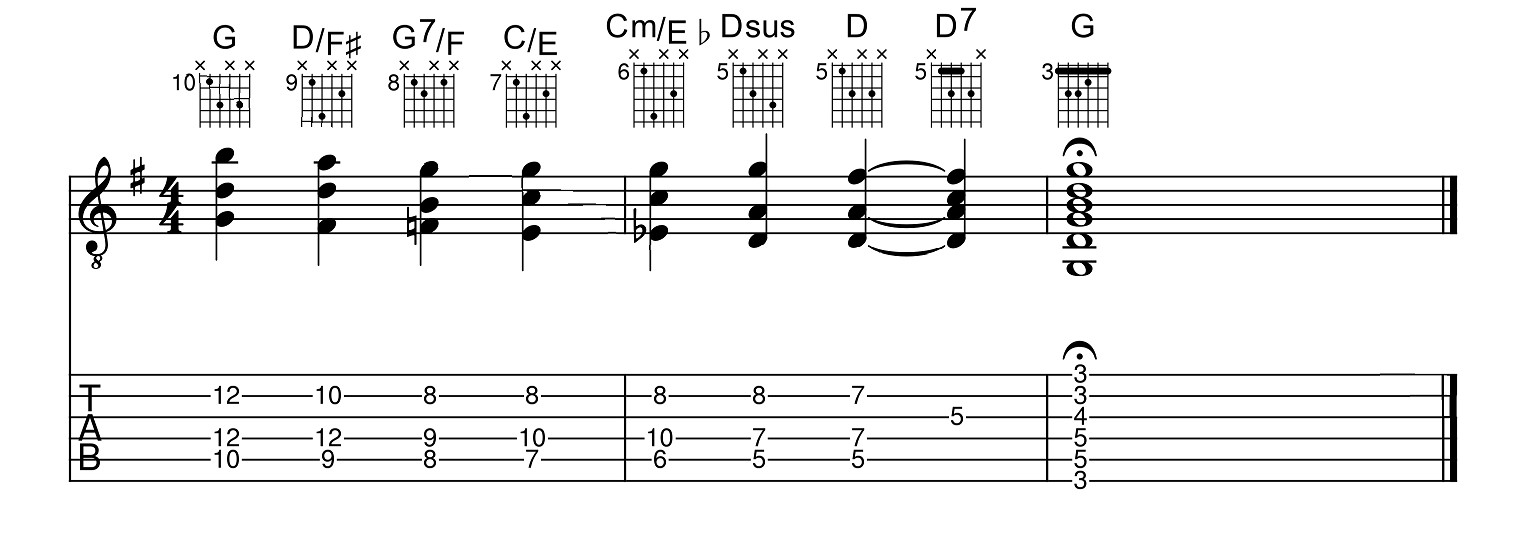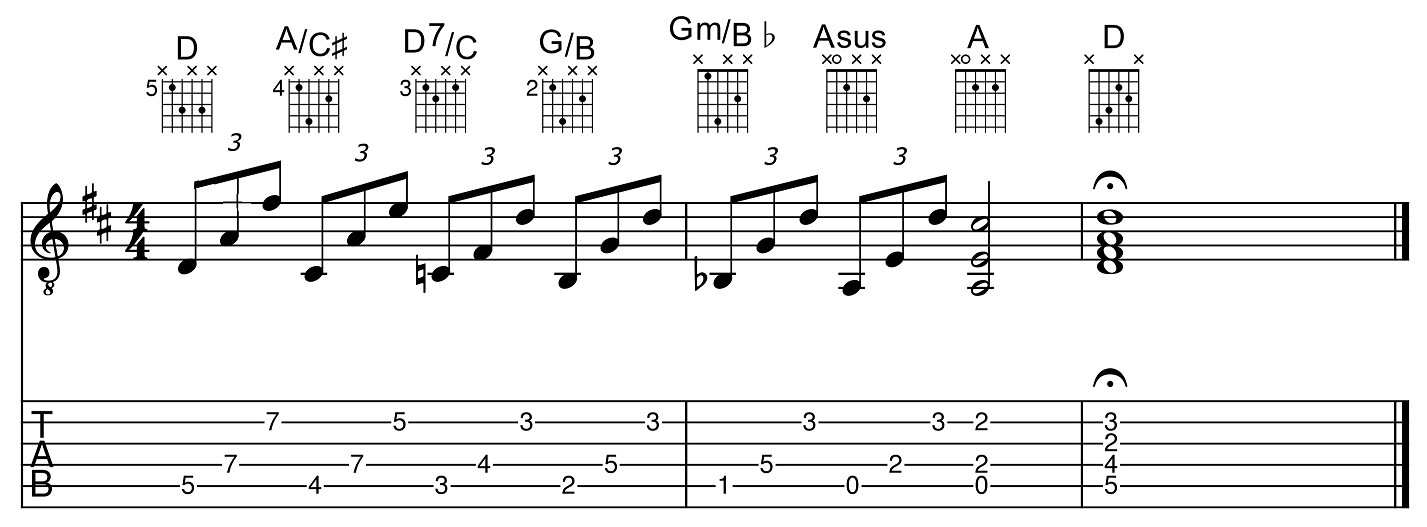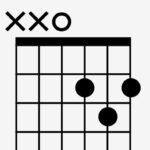Crafting compelling guitar music hinges on creating seamless transitions between chords. Achieving this smoothness, known as voice leading, elevates your compositions from simple chord progressions to sophisticated and engaging musical pieces. Inverted chords are your secret weapon in this endeavor, allowing for fluid movement between harmonies and unlocking a richer, more professional sound in your guitar playing. This guide will explore how to use inverted chords to create Smooth Guitar Chords progressions, enhancing your composing and arranging skills on the guitar.
Understanding Voice Leading for Smooth Chord Transitions
Voice leading, at its core, is the art of moving individual notes within chords smoothly from one chord to the next. Think of it like passing a melody through the different voices or notes of your chord progression. Effective voice leading minimizes large jumps between notes in the same voice, creating a more connected and pleasing sonic experience. Instead of abrupt shifts, you aim for stepwise motion or small intervals, ensuring a natural flow between each chord change. This technique is crucial for crafting professional-sounding guitar arrangements and compositions, making your music sound more polished and less disjointed.
The Power of Inverted Chords in Guitar Voicings
Chord inversions are simply different ways to voice a chord by changing which note is in the bass. A root position chord has its root note as the lowest note. Inversions, on the other hand, place a different chord tone (like the 3rd or 5th) in the bass. For guitarists, understanding inversions is transformative. It expands your fretboard navigation, offering multiple ways to play the same chord in different positions. More importantly, inversions are key to smooth voice leading because they allow you to find chord voicings that are closer in proximity to the previous and next chords in your progression. By strategically choosing inversions, you can minimize the distance your fingers need to travel and create those sought-after smooth guitar chords transitions. To explore a wide range of chord options and colors, consider checking out resources like the ‘Chords with Color’ chart, which can further inspire your chord voicing choices.
Voice Leading Example in G Major: Open Chords vs. Inversions
Let’s illustrate the power of voice leading with a common chord progression in G major: G – D – Em – C.
Open Chords in G Major
Using standard open chords, this progression might look like this:
[Diagram of G open chord]
[Diagram of D open chord]
[Diagram of Em open chord]
[Diagram of C open chord]
While functional, playing these open chords in sequence can sound somewhat disconnected. Listen to how much your hand needs to jump between each chord. The bass notes, in particular, make larger leaps.
Voice Leading with Inverted Chords in G Major
Now, let’s apply voice leading using inverted chords to the same G – D – Em – C progression. We can aim to keep some common tones and minimize movement between voices.
For the D chord, instead of the open D chord, we can use a D/F# (1st inversion) or D/A (2nd inversion) depending on the desired bass movement. For the Em chord, staying in a similar area of the neck, we can use an Em in a higher position which might naturally lead to a smoother transition to C. Let’s look at a specific voicing example focusing on smoother transitions:
[Diagram of G chord (open or barre)]
[Diagram of D/F# chord]
[Diagram of Em chord (higher voicing)]
[Diagram of C chord (barre or open)]
(Image 1: Chord Inversion Study #1 – Voice Leading)
 Alt text: Guitar chord diagrams showing a G to D/F# to Em to C progression with voice leading, illustrating smooth transitions between chord shapes.
Alt text: Guitar chord diagrams showing a G to D/F# to Em to C progression with voice leading, illustrating smooth transitions between chord shapes.
Notice how the chord shapes are positioned closer together on the fretboard. By using the D/F# inversion, the bass note moves smoothly from G to F#, a stepwise motion. The other voices also exhibit smaller movements compared to the open chord version. This creates a much smoother and more connected sound.
Voice Leading Example in D Major: Open Chords vs. Inversions
Let’s examine another common progression in D major: D – A – Bm – G.
Open Chords in D Major
Using open chords for this progression:
[Diagram of D open chord]
[Diagram of A open chord]
[Diagram of Bm open chord]
[Diagram of G open chord]
Again, while functional, the open chord voicing can sound jumpy, particularly in the bass.
Voice Leading with Inverted Chords in D Major
Applying voice leading with inversions to D – A – Bm – G:
For the A chord, we can use A/C# (1st inversion). For Bm, we can utilize a Bm/D (1st inversion) or Bm/F# (2nd inversion) to facilitate smooth transitions.
[Diagram of D chord (open or barre)]
[Diagram of A/C# chord]
[Diagram of Bm/D chord]
[Diagram of G chord (open or barre)]
(Image 2: Chord Inversion Study #2 – Voice Leading)

Alt text: Guitar chord diagrams illustrating a D to A/C# to Bm/D to G progression with voice leading, demonstrating minimized hand movements and smooth chord changes.
By using inversions like A/C# and Bm/D, we achieve smoother bass movement and closer proximity between chord shapes. The voice leading approach makes the progression flow more naturally and musically.
Melodic Connections and Voice Leading
Voice leading isn’t just about smooth chord changes; it also has a profound impact on the melodic content you can create within your progressions. When voices move smoothly, they can create subtle melodic lines within the harmonic texture. Pay attention to the highest voice in your chord voicings as you transition between chords. By consciously guiding this top voice, you can create beautiful melodic connections that further enhance the musicality of your smooth guitar chords progressions. Experiment with slightly altering inversions to bring out these melodic possibilities.
Conclusion: Unlock Smoothness with Inverted Chords
Mastering smooth guitar chords through voice leading and inverted chords is a game-changer for guitarists interested in composing, arranging, and deepening their understanding of harmony. By consciously choosing chord inversions and focusing on smooth transitions between individual notes within chords, you can elevate your guitar playing to a new level of musicality and sophistication. Start experimenting with inverted chords in your favorite progressions and hear the difference voice leading makes. For a broader palette of chord voicings and inspiration, don’t forget to explore resources like ‘Chords with Color’ to further enrich your musical journey.

